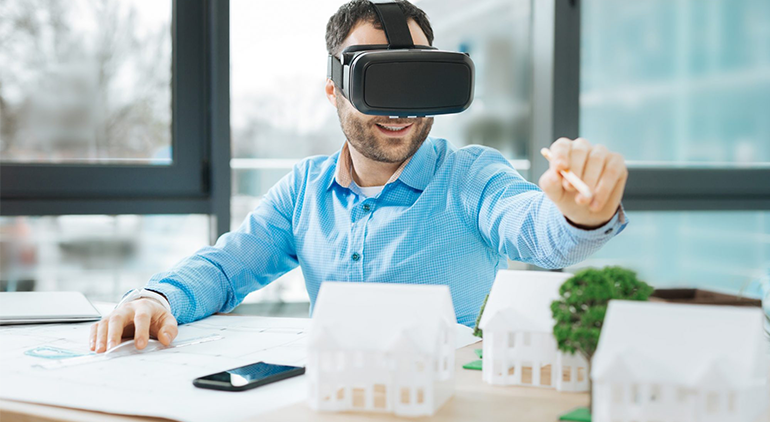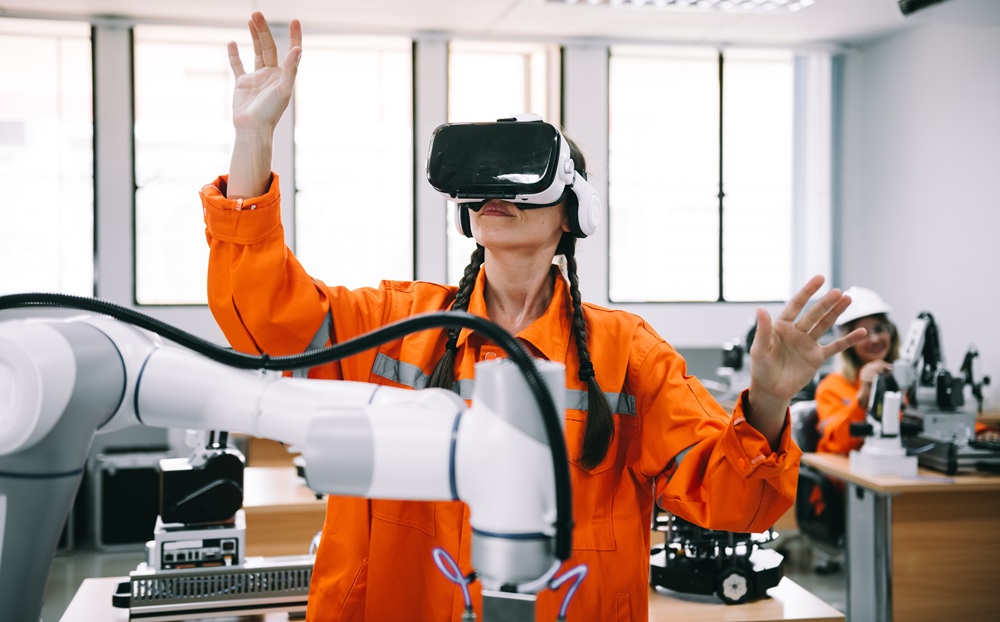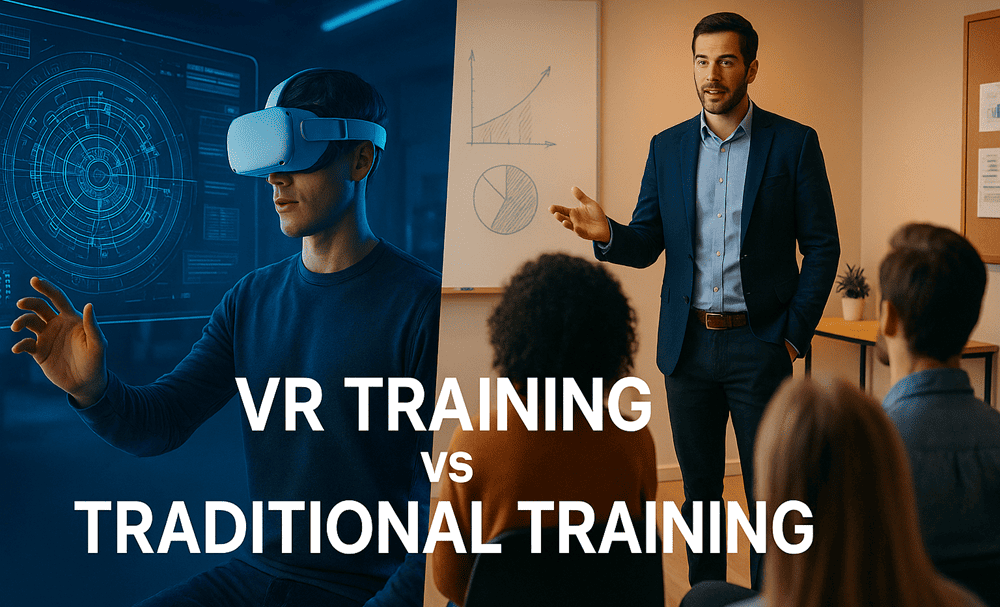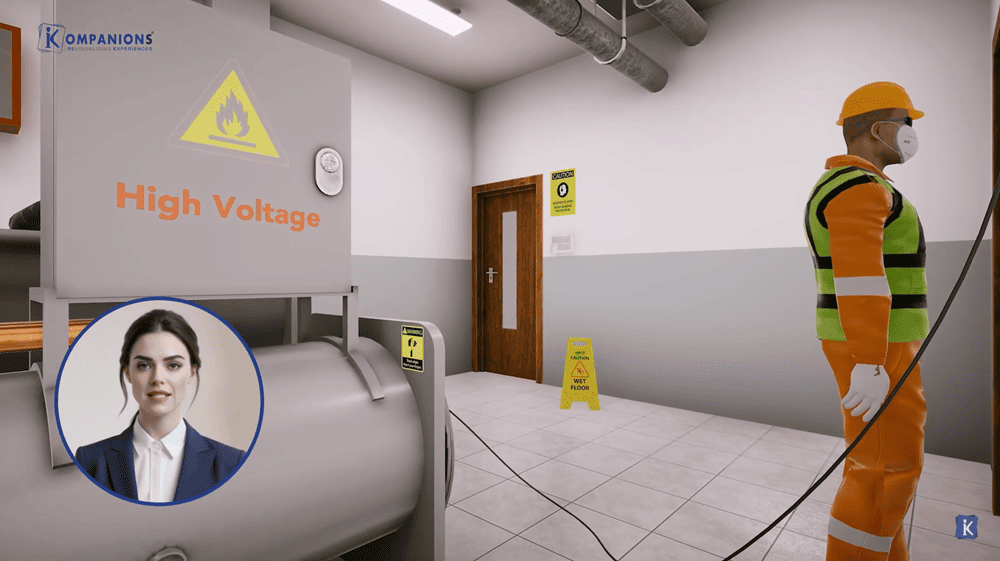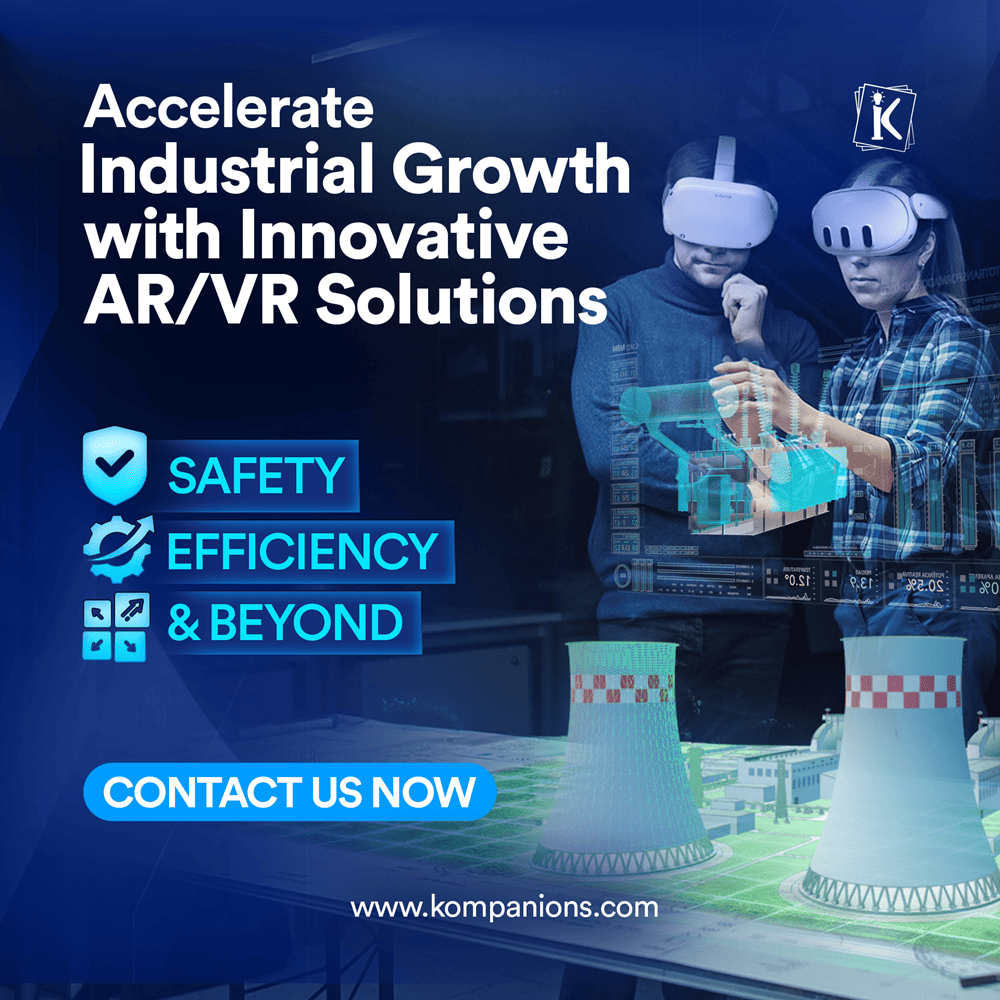
Article By: Robin Gupta
December 17, 2024 | 5 minutes to read | Updated On: 07 May 2025
Virtual Reality in Real Estate: Transforming Property Viewing in 2025
VR has grown rapidly in recent years, moving from heavy prototypes to mobile and affordable headsets. The content provided by VR is more immersive and realistic, so the devices are observing an increase in demand. VR is used to fulfill commercial and practical purposes.
Therefore, it opens up many opportunities for the virtual reality real estate business as well as, deals with checking the listings, price negotiations, and an in-person visit to the property. This workflow is quite robust and time-consuming for both the client and the realtor.
Therefore, virtual reality solutions for real estate can stand out to be a game-changer. VR in real estate is leveraged by agencies to attract customers and reduce their costs for visiting properties.
- Global VR Market Growth: The global virtual reality market is projected to grow from $20.83 billion in 2025 to $123.06 billion by 2032, exhibiting a CAGR of 28.9% during the forecast period. (Fortune Business Insights)
Agencies use virtual reality to show multi-million-dollar apartments, bungalows, lands, and houses located in cream areas to potential buyers, via the VR headsets.
Virtual Reality in Real Estate
Virtual reality in the real estate industry is changing the planning and design stages. This is because architects along with developers are creating virtual models of properties and neighborhoods.
Not only does this help in making the designs more accurate before the construction work begins. But also, by using VR in real estate, stakeholders receive the opportunity to review the plans and designs interactively and remotely thereby streamlining the process.
Since real estate is a multi-billion-dollar business, it has to adopt ways that can provide a good experience and satisfy prospects to invest their hard-earned money into their dream home or projects.
- The virtual reality services market is expected to grow from $15.1 billion in 2025 to $25.97 billion by 2029, at a CAGR of 14.5%. (The Business Research Company)
Recent Developments in VR Real Estate
1. CoStar's Acquisition of Matterport: In April 2024, CoStar Group announced its acquisition of Matterport for $1.6 billion to enhance its 3D virtual tour capabilities.
2. Reuters Integration of AI in Virtual Tours: AI is increasingly used to personalize virtual tours, offering tailored property recommendations based on user preferences.
3. Growth of Metaverse Real Estate: The metaverse real estate market is projected to grow from $5.47 billion in 2024 to $50 billion by 2035, indicating a significant shift towards virtual property investments.
VR Comes With a Lot of Benefits for Real Estate:
VR is reshaping the real estate landscape by providing immersive, interactive experiences that streamline processes and enhance client satisfaction.
From transforming property viewings to simplifying design visualizations, VR empowers stakeholders to make informed decisions with unprecedented ease and accuracy.
As a game-changer in the industry, VR bridges the gap between imagination and reality, offering solutions that are efficient, engaging, and cost-effective.
1. Virtual reality real estate tour of sites
Buying property for personal needs or business requires a lot of patience and time. It gets even harder when the site and the customers are geographically distant. Any technology is valued only when it can make our lives easier and more comfortable, and VR comes as a solution to this.
It helps us to save, what is considered the most precious of all, i.e., time and money in real estate. Therefore, the benefits of VR while having a virtual tour of any property are:
Saves time and money using VR real estate
With the help of virtual reality real estate, one can search and review a property in no time. One doesn’t have to spend hours and days visiting different properties, but simply wear a VR headset or device while sitting at home and get the work done.
This helps one to save on their traveling expense, especially when the property is situated overseas or at a place that requires huge time and money to be spent.
This can also work for realtors; they don’t have to advertise their property, thereby saving on advertising materials.
Transform how real estate is showcased with VR! Deliver immersive experiences that captivate clients.
Contact UsGlobal offers and demand for VR real estate
VR eliminates distance. With the help of VR, one can visit its property virtually. VR tours paved the way for realtors to expand their client base. They now don’t have to rely only on local buyers.
Customers can finalize distant property just by the use of the VR device. Thus, virtual reality can impact the global offer and demand in real estate.
Related post: Real Estate in the Metaverse Explained: Building Dreams Virtually
VR real estate engages emotionally
People are attached to their place of living. They are very choosy when it comes to their houses or offices. They tend to get attached emotionally to the places that are a part of their routine.
So, when choosing anything such, they don’t want to rush, but just freely explore and interact with the place. Therefore, virtual tours powered bu virtual reality real estate provide a realistic and immersive presence feeling in an individual.
They make one feel that they are there and feel that they are actually moving from one room to another. Therefore, VR real estate helps one to connect and close the deal by invoking a sense of ownership in them.
2. Virtual visualization and staging
VR helps assist in the sales of property under construction. Marketers always have a problem marketing things that are yet to be developed. They struggle in advertising, such as housing, which is under construction.
Therefore, they fail to bring confidence among buyers because of the lack of actual objects for them to see and decide. Also, the pale walls, absence of furniture & fittings, etc., can greatly reduce the chances of a sale.
But virtual reality for real estate marketing allows one to see the future look of the exterior and even interior designs, thus helping them to get an idea of how their house is going to look after it gets fully constructed.
Virtual reality for real estate agents collaborates with interior designers to show enhanced properties, which are called staging. Once the houses are staged, selling becomes easy.
- Listings with virtual tours sell for an average of 9% more and close 31% faster than those without. (The Luxury Playbook)
3. V-Commerce
Besides helping to create a nice impression, virtual interior design can be a part of v-commerce. Staging of the property comes with an extra option where realtors can easily add a purchase option with any element when staging the property or during a virtual tour.
This allows the customers to customize the spaces as per their wishes.
Virtual reality real estate allows the clients to make amendments to the color of the furniture, choose a different light fixture, or completely customize it as per their liking.
Real-World Applications of VR in Real Estate

Virtual Reality is no longer just a futuristic concept—it’s a practical, game-changing tool reshaping how real estate is marketed, viewed, and sold. From immersive virtual tours to AI-powered walkthroughs and remote property staging, here are some applications for VR in real estate.
1. Virtual Property Showings
VR enables potential buyers to tour properties remotely, providing a realistic sense of space and layout without physical visits.
Traditional vs. VR-Enhanced Property Viewing
| Feature | Traditional Viewing | VR-Enhanced Viewing |
|---|---|---|
| Physical Presence Required | Yes | No |
| Time Investment | High | Low |
| Geographical Limitations | Yes | No |
| Cost for Agents | High | Reduced |
| Buyer Engagement | Moderate | High |
| Visualization of Property | Limited | Immersive |
| Scheduling Constraints | Yes | Flexible |
2. AI-Enhanced Virtual Tours
Platforms like Matterport utilize AI to create immersive 3D tours, allowing users to explore properties interactively.
3. Virtual Staging and Renovation
AI-powered tools can virtually furnish and renovate spaces, helping buyers visualize potential modifications.
Virtual reality is reshaping real estate with innovative property tours and client engagement.
Contact UsThis will not only make the virtual tour of the property attractive but will also allow their customers to imagine how the property will look after making their customizations when they move in.
Also read: Virtual Reality for B2B
Even if they do not make changes to the interior during staging with a virtual tour, they still have a chance that they may find the items included in the 3D tour interesting. So eventually, they might buy them. This adds to the advantage of the realtor.
Thus, we can say virtual reality development will ease the real estate sector by way of marketing their products in varied and better ways to customers. Not only to the local clients but also to the international ones, as it eliminates distance and thus, the necessity to travel.
This saves time and money, both for the customers as well as the realtors. Apart from this, customers can get a first-hand experience of the property in a more immersive way. A home buyer can move in and out of the apartment.
He can easily get an aerial view of the entire society and can exactly figure out where his apartment is in the society, how far it is from the entrance or garden, and check out the ventilation, open spaces, greenery, nearby market, hospital, education center, etc.
He can put his opinion even when the flat is under construction, and at the same time customize it the way he likes and even get it purchased through v-commerce. Thus, AR and VR companies in India will ease the way the real estate sector works.
KOMPANIONS can we a top choice to develop AR VR solutions for real estate agencies in the USA, UK, Canada, and other top countries in the world. Get in touch with one of our top developers to initiate the conversation on your project.

